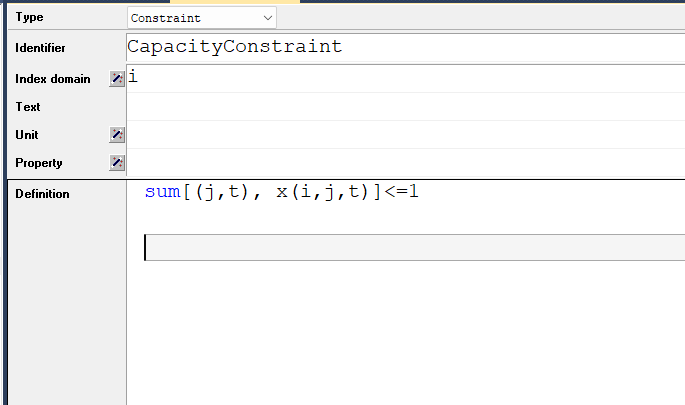Hi all,
I need to give a certain range to an index in a constraint, but I am not sure how to implement this in AIMMS. It is the following constraint:

In AIMMS already have this constraint but how do I change the constraint to the situation above?

 +4
+4Hi all,
I need to give a certain range to an index in a constraint, but I am not sure how to implement this in AIMMS. It is the following constraint:

In AIMMS already have this constraint but how do I change the constraint to the situation above?

Best answer by gdiepen
You can use the | operator (or such-that operator) for this in AIMMS.
In your case, if you want to generate that constraint for all i that are not equal to the first, you could do something like:
index domain: i | ord(i) >= 2
(ord gives the ordinal position in the set of the element, so this would restrict the generation to only those i that have ordinal position greater or equal then 2.
Within a sum, you can also limit the combinations by using the | operator again:
sum[ (j,t ) | ord(t) >=2, x(i,j,t) ] <=1
This would only includes those values of t in the sum that have ordinal position >= 2.
Based on the model formulation, you will have to determine what to put after the | operator
Already have an account? Login
Please use your business or academic e-mail address to register
No account yet? Create an account
Enter your E-mail address. We'll send you an e-mail with instructions to reset your password.
Didn't find what you were looking for? Try searching on our documentation pages: